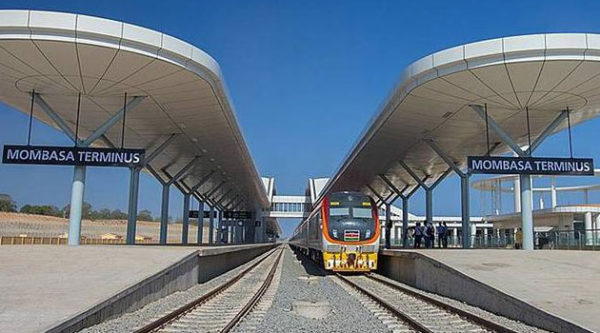The study by the University of Nairobi (UoN) also revealed that more than 60 percent of employees working at the Container Freight Stations (CFSs) were sacked over the same period. The government lost more than Sh126 billion in revenue in one year from Mombasa County since the introduction of freight trains, according to a new study released on Friday.
The study further revealed that the coastal county is at “economic decay point”, with CFSs, long-distance trucks and transport-related businesses such as fuelling and service stations mostly affected.
Presenting the assessment report on the socio-economic impact of the operationalization of the standard gauge railway (SGR), UoN acting deputy vice-chancellor, Prof Julius Ogeng’o, said the study shows the project has more negative effects on the economy of coastal people than good.
“We have met Mombasa Governor Hassan Joho, Coast MPs and other port stakeholders and they have validated the report which has indicated the significant levels of negative impacts,” said Prof Ogeng’o who was accompanied by team leader Ken Ogolla.
In the report, a total of 2,987 employees working in CFSs, trucks, and fuel stations have been laid off in the past one year while more than 8,111 workers are expected to be sent home if the directive is upheld.
Mombasa county will also fail to collect more than Sh17.3 billion due to closure of various businesses in the city while a number of businesses such as fuel stations, hotels, and lodges along the Northern Corridor will be affected due to lack of patrons.
Mr. Ogolla said the reported loss is as a result of the introduction of SGR freight trains and the order by the Kenya Ports Authority (KPA) and Kenya Revenue Authority (KRA) that all imported cargo from the Port of Mombasa to Nairobi and other hinterlands be transported by rail.
In the research, which was carried out between August 27 and September 14 last year, different stakeholders, including Kenya International Freight and Warehousing Association (Kifwa), Kenya Association of Manufacturers (KAM), Kenya Transport Association (KTA) and Kenya National Chamber of Commerce and Industry (KNCCI), among other stakeholders, were interviewed.
The report shows increasing cases of physiological related issues and break-up of societal bonds since the introduction of SGR and it recommends the need for a policy to allow the market operate freely to create a sustainable environment for other sector stakeholders and to mitigate against the depletion of county revenues.
Mr Joho and other leaders condemned KPA and KRA management for implementing an order which is not based on any law.
“We have been negatively affected as the report has clearly stated; that is why we shall take any action to ensure the directive is stopped since it is not based on any law,” said Mr. Joho.
He added; “We want SGR to haul only 30 percent of the cargo while the remaining to be transported by truck so that we ensure our economy is not derailed. We are alarmed by simple indicators such as increasing cases of house rent defaulters due to the number of people sacked from CFSs and the transport sector.”
SGR, which has been billed as the biggest transport infrastructure project in the country’s history, is expected to haul close to nine million tonnes of cargo to make a profit of Sh5.08 billion a year, averaging Sh424 million per month, compared with 990,488 tonnes carried in the first year when SGR made a loss of Sh10 billion.
Since the introduction of 100 percent ex-hook railing in May this year, KPA dispatches at least 10 cargo trains carrying more than 1,000 containers to Nairobi every day.
Statistics show that in January, SGR recorded 214 trains, followed by 172 in February, 184 in March while in April and May, they recorded 203 trains which transported cargo to Nairobi.
There's no story that cannot be told. We cover the stories that others don't want to be told, we bring you all the news you need. If you have tips, exposes or any story you need to be told bluntly and all queries write to us [email protected] also find us on Telegram

